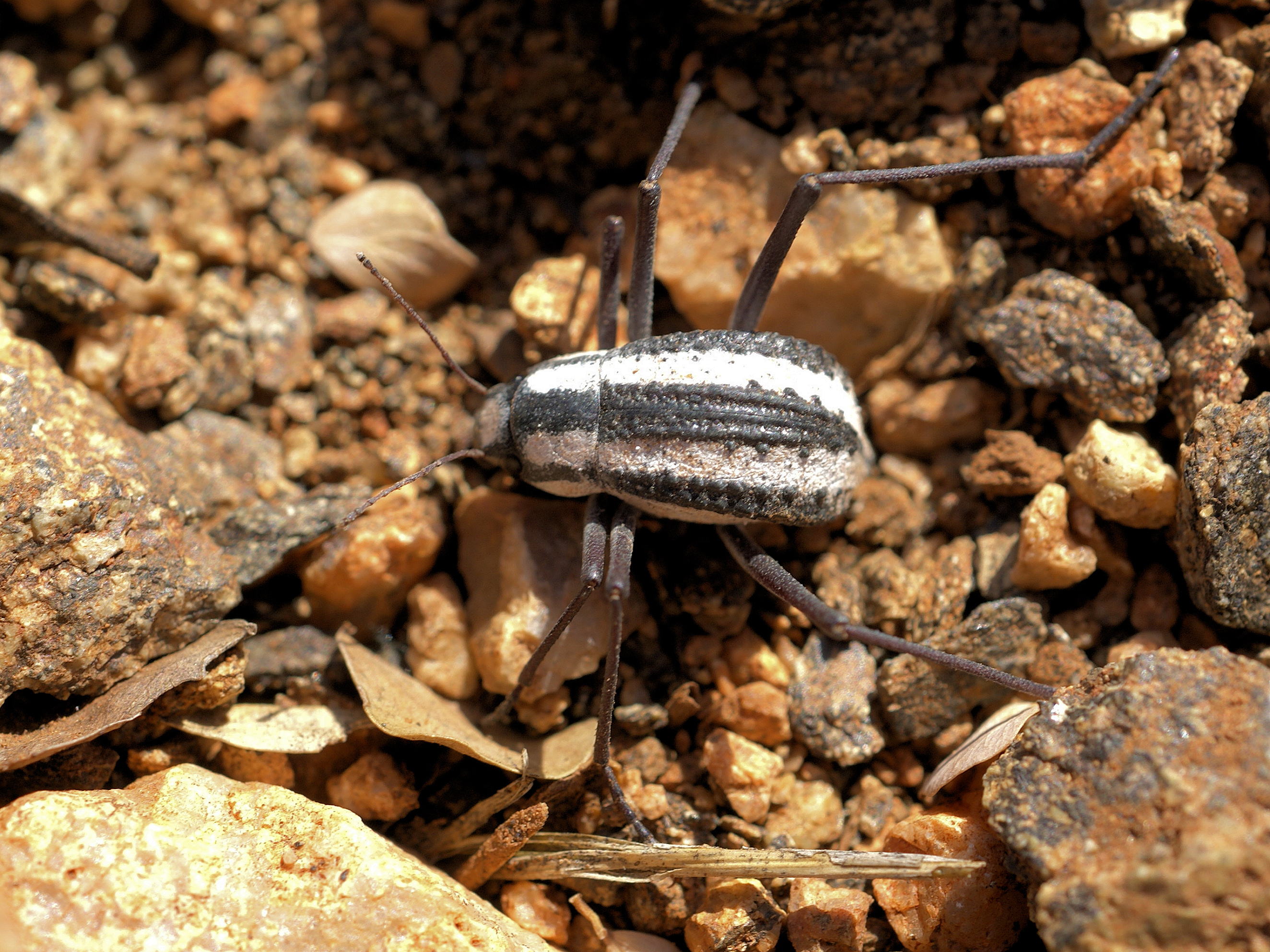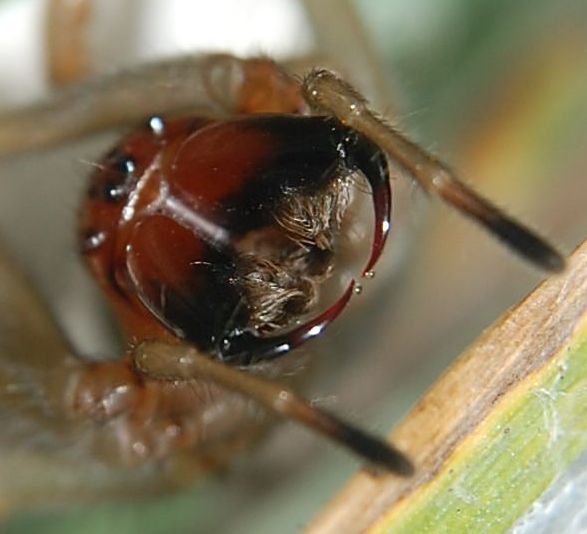|
Heliophanus Bisulcus
''Heliophanus bisulcus'' is a jumping spider species in the genus ''Heliophanus''. It was first described by Wanda Wesołowska in 1986 and is found in Namibia and South Africa South Africa, officially the Republic of South Africa (RSA), is the southernmost country in Africa. It is bounded to the south by of coastline that stretch along the South Atlantic and Indian Oceans; to the north by the neighbouring count .... What had been designated the species ''Heliophanus villosus'' was recognised as the female of this species in 2003. References Spiders described in 1986 Fauna of Namibia Salticidae Spiders of Africa Spiders of South Africa Taxa named by Wanda Wesołowska {{Heliophanus-stub ... [...More Info...] [...Related Items...] OR: [Wikipedia] [Google] [Baidu] |
Wanda Wesołowska
Wanda Wesołowska (born 11 August 1950) is a Polish zoologist known for her work with jumping spiders. She has described more species of jumping spider than any contemporary writer, and is second only to Eugène Simon in the history of arachnology. Originally a student of ornithology, she developed an interest in jumping spiders while still a student at the Siedlce University of Natural Sciences and Humanities in the 1970s. She subsequently undertook study into the genus ''Heliophanus'' at the University of Wroclaw. Her subsequent doctoral thesis described 44 new species, and joined the staff at the university. She stayed until retiring in 2020. Her research included the taxonomy and zoogeography of jumping spiders, and has included extensive work on African genera like ''Menemerus'' and '' Pachyballus''. She has identified over 500 species, including half of all those from South Africa, as well as having more than 20 named after her. Early life Wanda Wesołowska (née Nowysz) was ... [...More Info...] [...Related Items...] OR: [Wikipedia] [Google] [Baidu] |
Jumping Spider
Jumping spiders are a group of spiders that constitute the family Salticidae. As of 2019, this family contained over 600 described genera and over 6,000 described species, making it the largest family of spiders at 13% of all species. Jumping spiders have some of the best vision among arthropods and use it in courtship, hunting, and navigation. Although they normally move unobtrusively and fairly slowly, most species are capable of very agile jumps, notably when hunting, but sometimes in response to sudden threats or crossing long gaps. Both their book lungs and tracheal system are well-developed, and they use both systems (bimodal breathing). Jumping spiders are generally recognized by their eye pattern. All jumping spiders have four pairs of eyes, with the anterior median pair being particularly large. Distinguishing characteristics Jumping spiders are among the easiest to distinguish from similar spider families because of the shape of the cephalothorax and their eye patt ... [...More Info...] [...Related Items...] OR: [Wikipedia] [Google] [Baidu] |
Heliophanus
''Heliophanus'' is a genus of the spider family Salticidae (jumping spiders). Most of the almost 170 described species occur in Africa, with many others found in the Palearctic region from Europe to Japan. Species , the World Spider Catalog accepted the following species: * '' Heliophanus abditus'' Wesołowska, 1986 – Syria * '' Heliophanus aberdarensis'' Wesołowska, 1986 – Kenya * '' Heliophanus activus'' ( Blackwall, 1877) – Seychelles * '' Heliophanus acutissimus'' Wesołowska, 1986 – Algeria * '' Heliophanus aeneus'' ( Hahn, 1832) – Palearctic * '' Heliophanus aethiopicus'' Wesołowska, 2003 – Ethiopia * '' Heliophanus africanus'' Wesołowska, 1986 – South Africa * '' Heliophanus agricola'' Wesołowska, 1986 – Algeria, Spain * '' Heliophanus agricoloides'' Wunderlich, 1987 – Canary Islands * '' Heliophanus alienus'' Wesołowska, 1986 – Cameroon * '' Heliophanus anymphos'' Wesołowska, 2003 – Kenya * '' Heliophanus apiatus'' Simon, 1868 – Spain ... [...More Info...] [...Related Items...] OR: [Wikipedia] [Google] [Baidu] |
Namibia
Namibia (, ), officially the Republic of Namibia, is a country in Southern Africa. Its western border is the Atlantic Ocean. It shares land borders with Zambia and Angola to the north, Botswana to the east and South Africa to the south and east. Although it does not border Zimbabwe, less than 200 metres (660 feet) of the Botswanan right bank of the Zambezi River separates the two countries. Namibia gained independence from South Africa on 21 March 1990, following the Namibian War of Independence. Its capital and largest city is Windhoek. Namibia is a member state of the United Nations (UN), the Southern African Development Community (SADC), the African Union (AU) and the Commonwealth of Nations. The driest country in sub-Saharan Africa, Namibia has been inhabited since pre-historic times by the San, Damara and Nama people. Around the 14th century, immigrating Bantu peoples arrived as part of the Bantu expansion. Since then, the Bantu groups, the largest being the ... [...More Info...] [...Related Items...] OR: [Wikipedia] [Google] [Baidu] |
South Africa
South Africa, officially the Republic of South Africa (RSA), is the southernmost country in Africa. It is bounded to the south by of coastline that stretch along the South Atlantic and Indian Oceans; to the north by the neighbouring countries of Namibia, Botswana, and Zimbabwe; and to the east and northeast by Mozambique and Eswatini. It also completely enclaves the country Lesotho. It is the southernmost country on the mainland of the Old World, and the second-most populous country located entirely south of the equator, after Tanzania. South Africa is a biodiversity hotspot, with unique biomes, plant and animal life. With over 60 million people, the country is the world's 24th-most populous nation and covers an area of . South Africa has three capital cities, with the executive, judicial and legislative branches of government based in Pretoria, Bloemfontein, and Cape Town respectively. The largest city is Johannesburg. About 80% of the population are Black Sou ... [...More Info...] [...Related Items...] OR: [Wikipedia] [Google] [Baidu] |
Spiders Described In 1986
Spiders (order Araneae) are air-breathing arthropods that have eight legs, chelicerae with fangs generally able to inject venom, and spinnerets that extrude silk. They are the largest order of arachnids and rank seventh in total species diversity among all orders of organisms. Spiders are found worldwide on every continent except for Antarctica, and have become established in nearly every land habitat. , 50,356 spider species in 132 families have been recorded by taxonomists. However, there has been debate among scientists about how families should be classified, with over 20 different classifications proposed since 1900. Anatomically, spiders (as with all arachnids) differ from other arthropods in that the usual body segments are fused into two tagmata, the cephalothorax or prosoma, and the opisthosoma, or abdomen, and joined by a small, cylindrical pedicel, however, as there is currently neither paleontological nor embryological evidence that spiders ever had a separate th ... [...More Info...] [...Related Items...] OR: [Wikipedia] [Google] [Baidu] |
Fauna Of Namibia
The wildlife of Namibia is composed of its flora and fauna. Namibia's endangered species include wild dog, black rhino, oribi and puku. Endangered Species The puku antelope is limited to about 100 individuals along the Chobe River in Botswana and the Linyati marshes in Namibia. The black and white rhino have suffered the most from poaching and are on the verge of extinction. If there had been no effort to save them in the last 20 years they most likely would have disappeared altogether. While both species occur naturally in Namibia, in many of the reserves they have been reintroduced. The country also has the largest population in southern Africa of cheetah not contained within national parks. There are over twenty species of antelope ranging from the largest, the eland, to the smallest, the Damara dik-dik. The gemsbok, a striking antelope with long symmetrical horns and distinctive black and white markings is featured on the Namibian coat of arms. Namibia also harbours ... [...More Info...] [...Related Items...] OR: [Wikipedia] [Google] [Baidu] |
Salticidae
Jumping spiders are a group of spiders that constitute the family Salticidae. As of 2019, this family contained over 600 described genera and over 6,000 described species, making it the largest family of spiders at 13% of all species. Jumping spiders have some of the best vision among arthropods and use it in courtship, hunting, and navigation. Although they normally move unobtrusively and fairly slowly, most species are capable of very agile jumps, notably when hunting, but sometimes in response to sudden threats or crossing long gaps. Both their book lungs and tracheal system are well-developed, and they use both systems (bimodal breathing). Jumping spiders are generally recognized by their eye pattern. All jumping spiders have four pairs of eyes, with the anterior median pair being particularly large. Distinguishing characteristics Jumping spiders are among the easiest to distinguish from similar spider families because of the shape of the cephalothorax and their eye patt ... [...More Info...] [...Related Items...] OR: [Wikipedia] [Google] [Baidu] |
Spiders Of Africa
Spiders (order Araneae) are air-breathing arthropods that have eight legs, chelicerae with fangs generally able to inject venom, and spinnerets that extrude silk. They are the largest order of arachnids and rank seventh in total species diversity among all orders of organisms. Spiders are found worldwide on every continent except for Antarctica, and have become established in nearly every land habitat. , 50,356 spider species in 132 families have been recorded by taxonomists. However, there has been debate among scientists about how families should be classified, with over 20 different classifications proposed since 1900. Anatomically, spiders (as with all arachnids) differ from other arthropods in that the usual body segments are fused into two tagmata, the cephalothorax or prosoma, and the opisthosoma, or abdomen, and joined by a small, cylindrical pedicel, however, as there is currently neither paleontological nor embryological evidence that spiders ever had a separat ... [...More Info...] [...Related Items...] OR: [Wikipedia] [Google] [Baidu] |
Spiders Of South Africa
Spiders (order Araneae) are air-breathing arthropods that have eight legs, chelicerae with fangs generally able to inject venom, and spinnerets that extrude silk. They are the largest order of arachnids and rank seventh in total species diversity among all orders of organisms. Spiders are found worldwide on every continent except for Antarctica, and have become established in nearly every land habitat. , 50,356 spider species in 132 families have been recorded by taxonomists. However, there has been debate among scientists about how families should be classified, with over 20 different classifications proposed since 1900. Anatomically, spiders (as with all arachnids) differ from other arthropods in that the usual body segments are fused into two tagmata, the cephalothorax or prosoma, and the opisthosoma, or abdomen, and joined by a small, cylindrical pedicel, however, as there is currently neither paleontological nor embryological evidence that spiders ever had ... [...More Info...] [...Related Items...] OR: [Wikipedia] [Google] [Baidu] |



